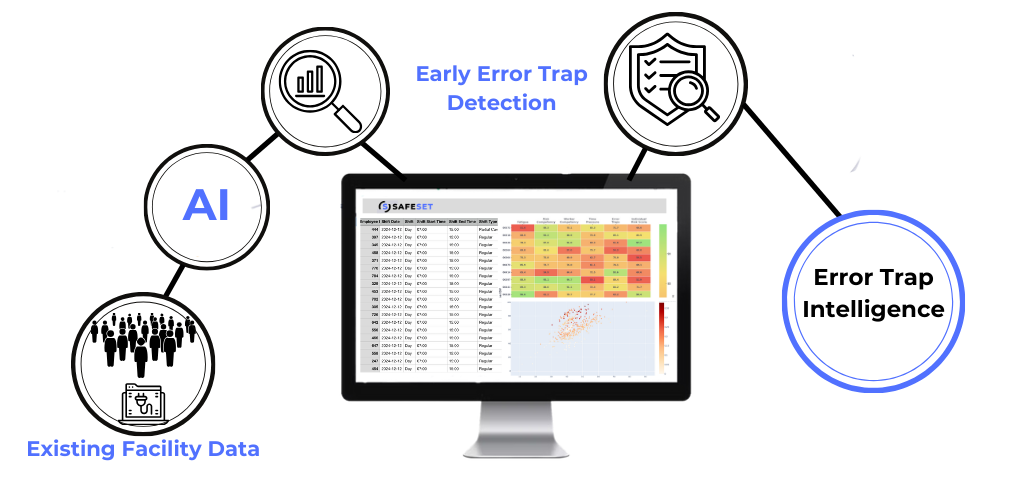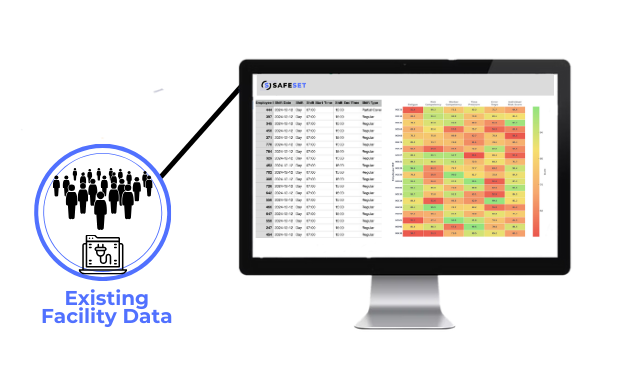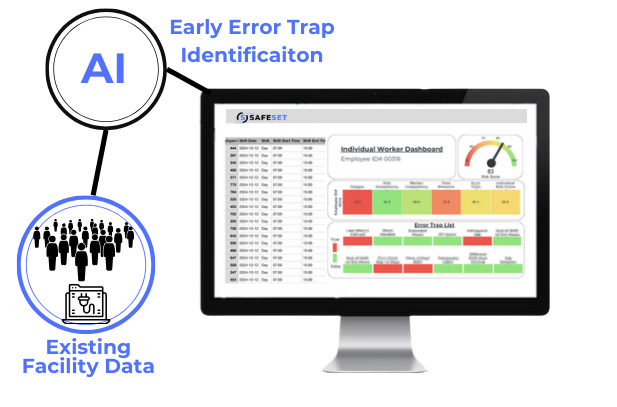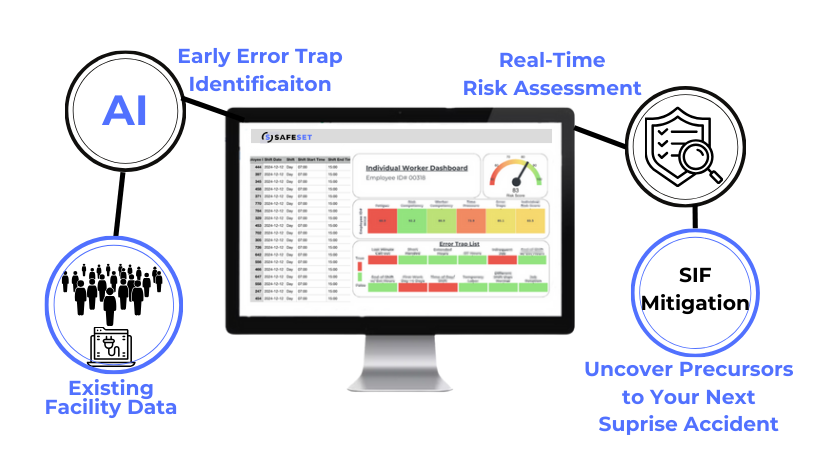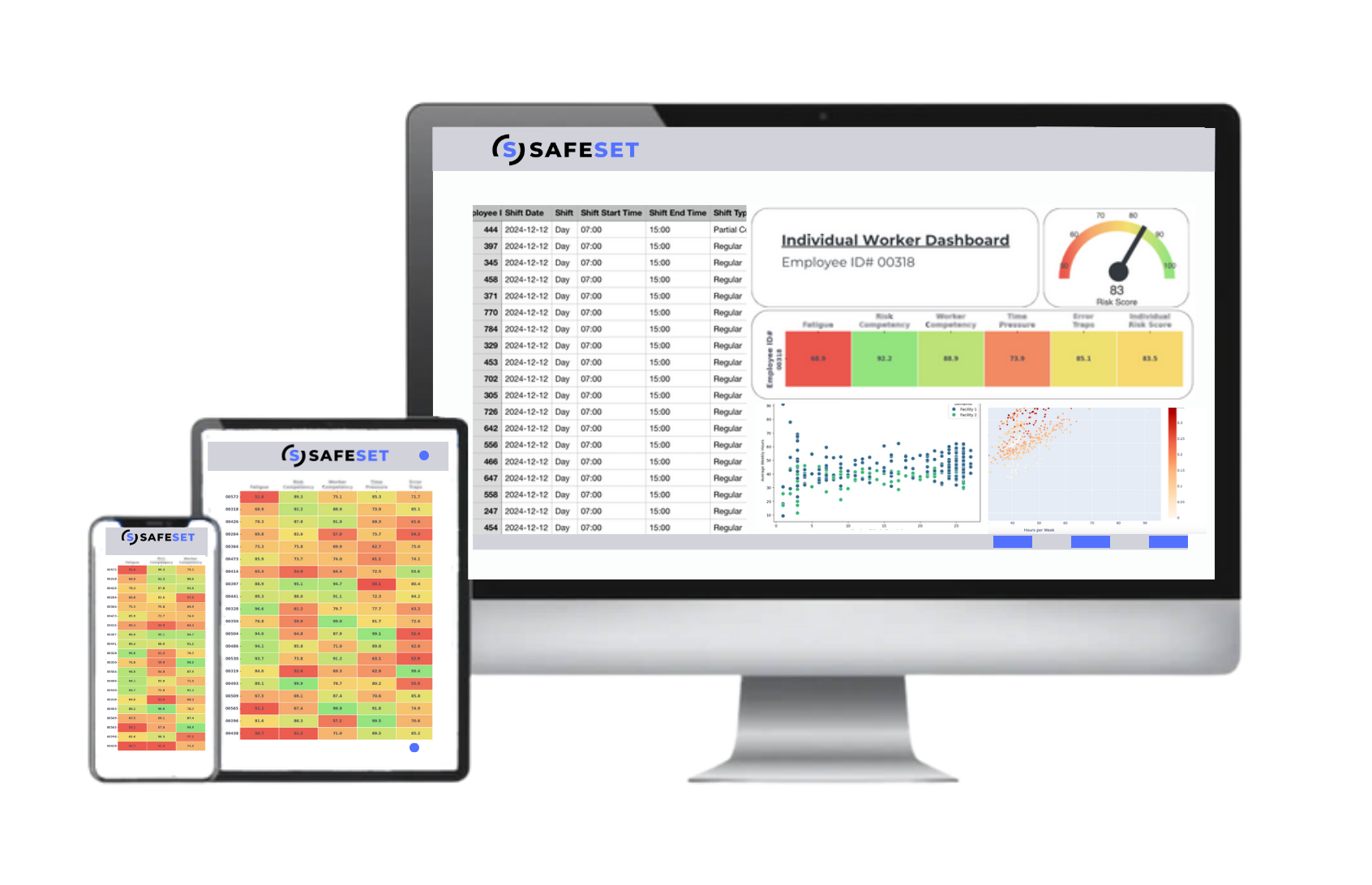
Capacity-Based Monitoring
Gauge your systems ability to fail safely
Like predictive maintenance but for “People Failures” instead of machine failures. We predict when systemic conditions are mostly likely to drive costly human errors.
Partnering with Leading Organizations to build the first of its kind solution to Monitor Capacity & Resilience in Real-time

The problem isn’t what you’re measuring. It’s what you’re not monitoring for.
Most safety systems measure outcomes. Lagging indicators like injuries, quality issues and near misses.
But those only tell you what happened after your system ran out of capacity.
What you’re not measuring and monitoring for is:
Margin
How close your people are to the edge.
Resilience
How well the system can adapt under strain
Capacity
How much failure your system can absorb without breaking
These are the conditions that predict failure, and they are hiding in Normal Work
Our Solution
Capacity-Based Monitoring to detect the upstream conditions that lead to costly operational failures
Like predictive maintenance, but for the conditions that increase the risk of People Failures instead of machine failures
How Our Solution Works
1.
Real-Time Operational Intelligence at the Front-line using Existing Facility Data
Seamlessly & securely integrate with your plant's existing data streams to capture operational intelligence in real-time from “Normal Work” variability. No additional hardware needed.
2.
AI-Driven Pattern Recognition for Early Error Trap Detection
Leveraging advanced algorithms, it identifies emerging patterns and subtle anomalies in real- time to signal potential issues early on.
3.
By continuously comparing live data with expected performance benchmarks, our system provides ongoing risk assessments highlighting deviations from normal operations.
Real-Time Monitoring & Risk Assessments
4.
From your visualization command center, you can gain visibility into critical hot spots from error producing conditions before your people interface with risk
Heat Map Visualization for Critical Hot Spot Detection
Operationalize Error Trap Detection into your safety process and gain visibility into normal work variability from data at the Front-Line
-
An error trap is a condition or situation in the work environment that increases the likelihood of human error. These traps don't cause harm directly but set people up to fail by making mistakes more probable, often without them realizing it. Recognizing and managing error traps is key to building resilient systems that anticipate human fallibility.
-
Hazards are direct sources of potential harm. They are the energy that can cause injury, damage or loss and are inherently dangerous. Error Traps on the other hand, are conditions that increase the likelihood of human error. They don’t directly cause harm, but they set people up to make errors.
-
Error traps are often missed in traditional risk assessments because those assessments are typically hazard focused and not context-focused. Those “conditions for failure” are the contextual factors—the error traps—that only show up when you look closely at how work is actually done, not just how it was designed.
-
Some error traps can only be uncovered with non-traditional safety data because traditional safety metrics—like incident rates, audits, and compliance checks—tend to focus on outcomes and rule-following, not the conditions that make errors more likely. These conventional tools often miss the subtle, day-to-day realities of normal work where error traps actually live.
FAQs
Pricing
90 Day Money Back Guarantee
Worry free access to cutting edge technology and Human & Organization Performance tools to accelerate your resilience journey
Bring Transparency to the normal work conditions that challenge the way your people work successfully
Contact Us for Pricing
Data Integration
Detection of Hidden Error Traps
Real-time Monitoring
Actionable HOP Insights
Operational Intelligence Directly from the Front-line
AI-Powered Solution




